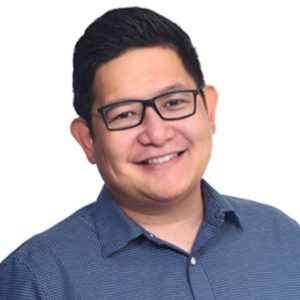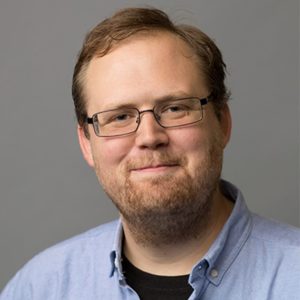Congratulations to our 2024 Journal of Materials Chemistry Lectureship runners-up, Dr Maxx Arguilla and Dr Phillip Milner
This year, Dr Raphaële Clément from University of California, Santa Barbara, United States was selected as the recipient of the 2024 Journal of Materials Chemistry Lectureship. While we can only award one winner, we wanted to recognise two runners-up for their impressive contributions to materials chemistry and as emerging leaders in the field.
Congratulations to Dr Maxx Arguilla (University of California, Irvine, United States) and Dr Phillip Milner (Cornell University, United States) for being selected as the runners-up of the 2024 Journal of Materials Chemistry Lectureship.
Check out our interview with Maxx and Phillip below:
How did you feel when you were announced as a runner-up of the 2024 Journal of Materials Chemistry Lectureship?
MA: Being a runner-up for the 2024 JMC is a great honor for me as it recognizes our contributions in understanding the chemistry and physics of emergent 1D and quasi-1D solids that approach the sub-nanometer-thick regime that many have thought would be very challenging and almost impossible. It is, personally, special since this recognition is coming from one of the family of materials chemistry journals that I have followed consistently since my formative years. The previous awardees and runners-up are also materials scientists that I look up to and aspire to emulate. Most importantly, this award is a recognition of the tremendous collective effort of the members of my group and our network of collaborators who have dedicated their time, effort, and creativity in exploring an unusual and understudied class of low-dimensional solids.
PM: I feel truly honored to be recognized as a runner-up for this lectureship. Having been trained classically as an organic chemist during my PhD, I came to the world of materials relatively late. Our research group tries to blend the two worlds together in (what we hope are) new and innovative ways. Being recognized with this prestigious lectureship highlights how supportive the materials community has been of our work over the last 6 years.
Which of your Journal of Materials Chemistry publications are you most proud of and why?
MA: I am most proud of my first paper in JMCC (J. Mater. Chem. C, 2017, 5, 11259-11266) where I demonstrated how micro-Raman spectroscopy can be used a probe to study the composition- and stacking-dependence of the Raman-active phonon modes in layered honeycomb Zintl phase tetrelides and their 2D van der Waals deintercalation products. This is a paper that I wrote when I was in graduate school but the approach that I have taken in this work has shaped how we use micro-Raman spectroscopy in my group as an enabling tool to probe the structure, lattice dynamics, and stimulus-sensitive response of various classes of low-dimensional solids, especially approaching atomic scale thicknesses.
PM: I am going to cheat a little bit and pick a paper from each JMC-A and JMC-C! In a paper we published in JMC-A last year (J. Mater. Chem. A, 2023, 11, 17159–17166) we built upon some previous work to try to identify general conditions for the solvent-free synthesis of conjugated microporous polymers. We tested over 30 different Lewis/Bronsted acids and found just one (ZnBr2) that can be used generally to make many different porous materials from simple poly(ketone) monomers. Really a user-friendly way to make porous materials, which is something our lab is excited about. This year in JMC-C, we published a paper looking carefully at a really difficult problem – nitrous oxide (N2O) activation using MOFs. We looked carefully at a number of different materials to try to understand what enables N2O cleavage by metal sites in MOFs to make N2 and reactive metal oxos. This work also sparked a collaboration with Heather Kulik at MIT, which continues to this day!
At which upcoming conferences may our community meet you?
MA: My group and I will be attending the American Chemical Society Spring 2025 meeting in San Diego and the North American Solid State Chemistry Conference in Ames, Iowa in Summer 2025.
PM: I am currently planning to attend EuroMOF 2025!
What do you like to do in your free time?
MA: In a recent feature in C&EN magazine (https://cen.acs.org/materials/inorganic-chemistry/Maxx-Arguilla/101/i16), I talked about how the 1D materials that my group works on resemble many forms of pasta of various thicknesses, dimensionalities (spaghetti vs. lasagna), tubular forms (penne and rigatoni), or even complex chiral structures (fusilli and rotini). This comparison was intentionally by design since I am a foodie—I spend my free time either trying out new hole-in-the-wall restaurants or cooking (often times, homemade pasta dishes) in my home kitchen.
PM: Since it is basically just “applied chemistry,” brewing beer is something I like to do for fun. I also like to listen to (admittedly terrible) music.
Do you have any advice for Early-Career researchers who wish to be nominated for the 2025 JMC Lectureship award?
MA: While many of our projects are hypothesis-driven, the most unusual results that we found in our materials systems arose from curiosity-driven research. In classes of materials where our chemical intuition is limited, there is a large, untapped opportunity to explore ideas that do not necessarily conform to the scientific norms in various fields. Thus, if there is an advice that I can give to early-career researchers, it would be to follow their scientific curiosities as these could lead to surprising discoveries that can accelerate (or change) the course of the field!
PM: One piece of advice I got (from one of my colleagues) is “there is no silver bullet.” I interpreted this as, don’t just do whatever everyone else is doing – work on what you find interesting and think could be impactful! It is good to think outside the box about what new ideas you can bring to long-standing challenges in the field.
Related posts:
2024 Journal of Materials Chemistry Lectureship winner: Raphaële Clément
2024 Journal of Materials Chemistry Lectureship shortlisted candidates












